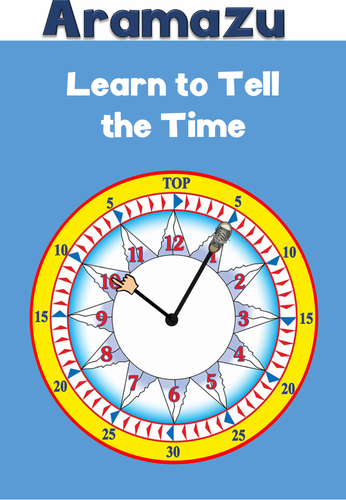







The Aramazu method of learning to tell the time on an analogue clock was originally developed for primary school children. This collection of resources adapts the Aramazu approach to appeal to secondary school students. I have used this approach successfully to teach 16-18 year old students with dyslexia and dyscalculia how to tell the time.
The resources included in this package are:
A Student Progress Tracker
I glue this in my student’s books. The tracker shows 8 levels that the students have to move up in order to reach the target. Students start at the bottom (level 1) and once each level is completed, we highlight it. The goal is to reach level 8. The progress path is shown both in words and pictures so all my students can access the information.
An Illustrated Set of Notes
These can be used as a interactive teaching resource or as handouts for students.
Flash Cards / Match Pairs Cards
The Aramazu clocks can be used as flash cards or together with the word cards as a matching activity.
A Giant Aramazu Wall Clock
Perfect for kinaesthetic and visual learners, a printable giant Aramazu wall clock for students to practise showing the time on.
I’ve also included a few worksheets and posters to support learning.
The end goal is for students to be able to tell the time to 5 minute intervals on an Aramazu clock. Once students have mastered this, you can then use the ‘Goodbye Aramazu’ resource to support students with the transition to reading a ‘typical’ analogue clock:
https://www.tes.com/teaching-resource/learn-to-tell-the-time-goodbye-aramazu-12084255
Something went wrong, please try again later.
Report this resourceto let us know if it violates our terms and conditions.
Our customer service team will review your report and will be in touch.